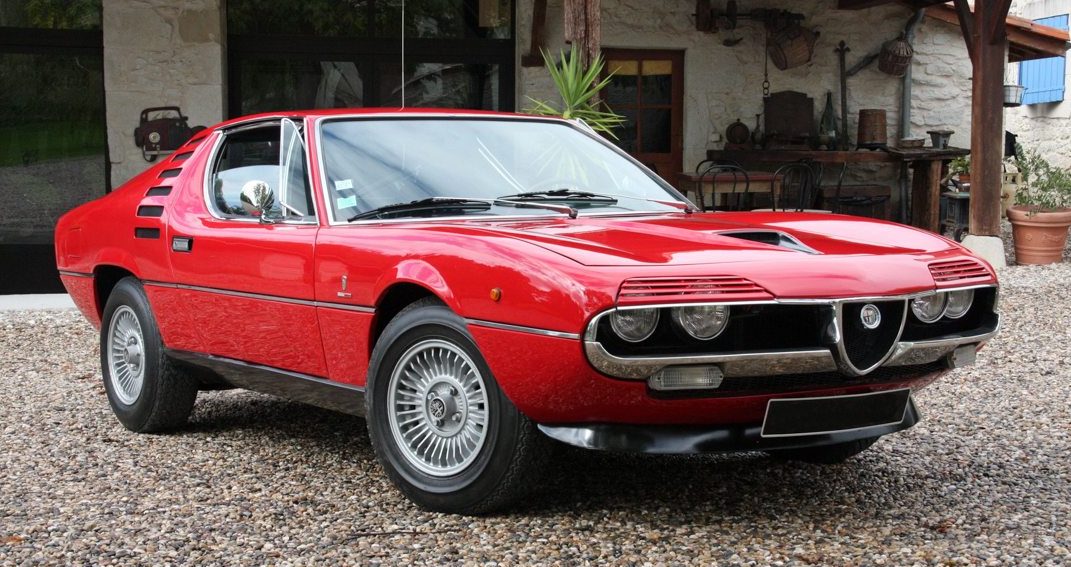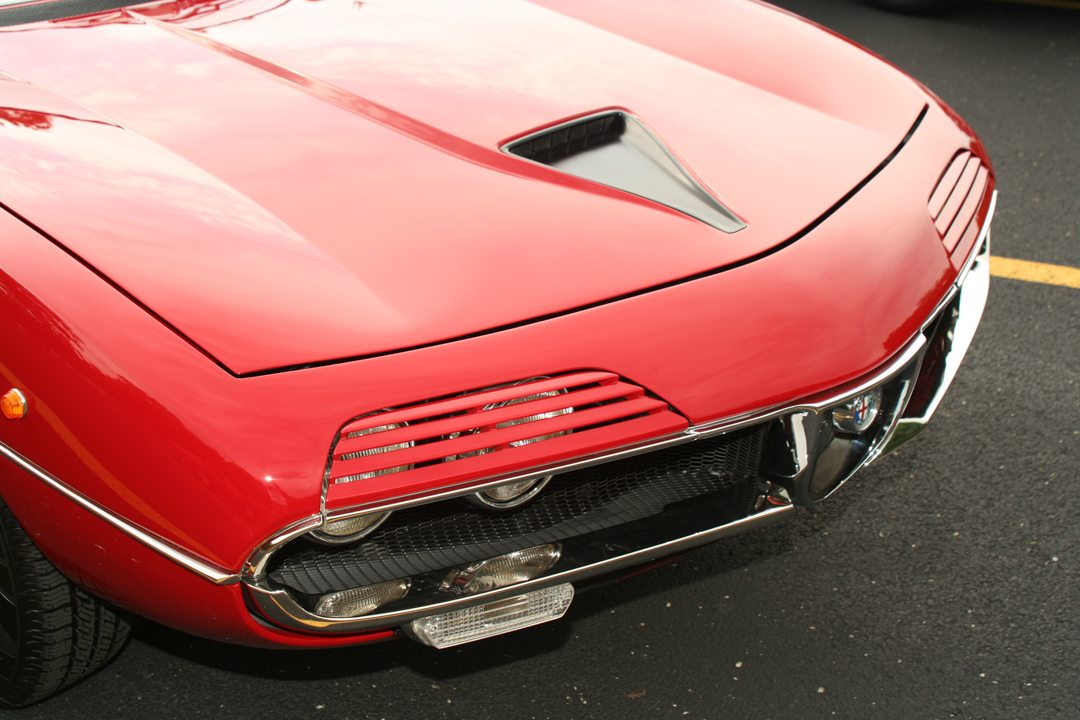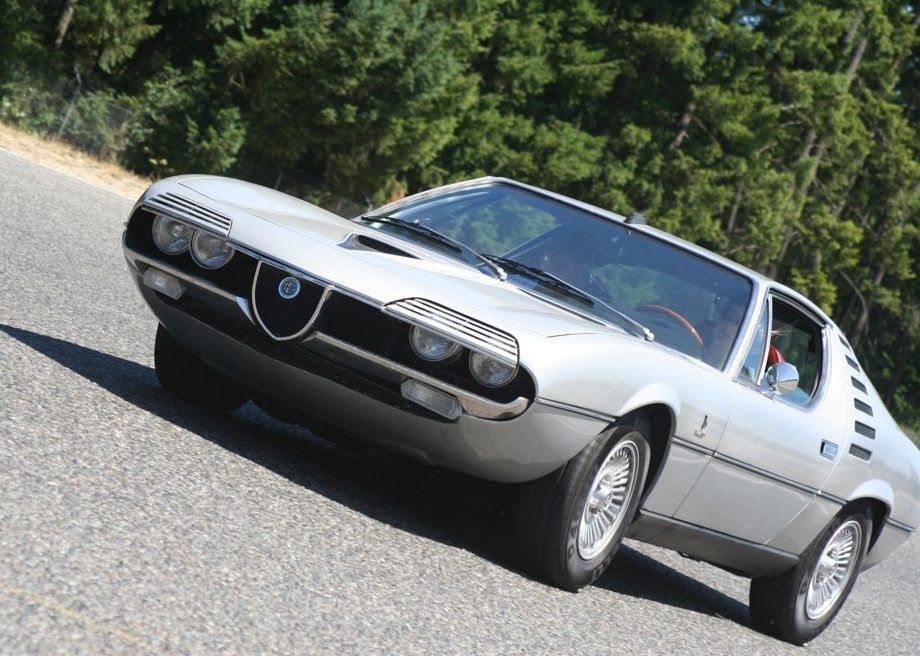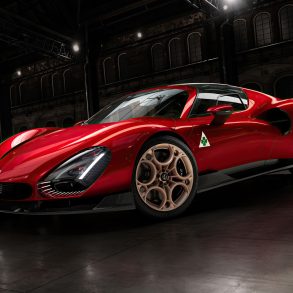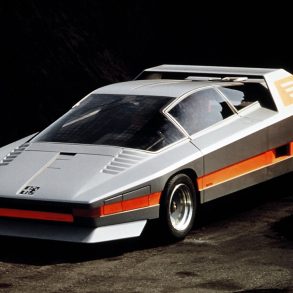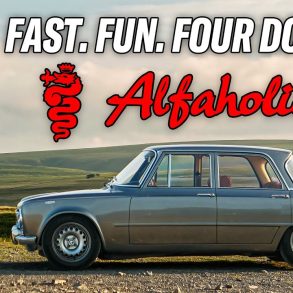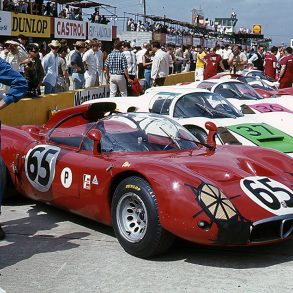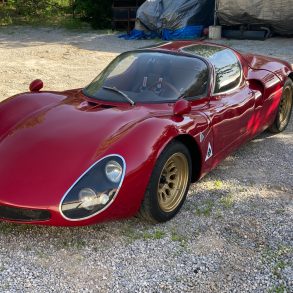A little more more than 50 years ago, Montreal, Canada was busy preparing to host the 1967 World’s Fair, to be known as Expo ‘67. The theme for this celebration of Canada’s Centennial was “Man and his World”, which was to celebrate the many technological advances modern humans were making, and where we were headed in the future. Part of that planning included the creation of a large pavilion to feature modern manufacturing and production technology. It would be called “Man the Producer”, and as part of its display, the planners sought to have the most interesting concept car they could get. For that, they turned to the styling house of Bertone and Alfa Romeo.

The sleek lines of the all-white prototype designed by the prolific Marcello Gandini of Bertone was matched with power by Alfa’s standard four-cylinder production motor and drivetrain. The car sported an attractive and modern profile similar to Lamborghini’s Miura and the Ford-DeTomaso Pantera, also designed by Gandini. Setting to work with a short deadline and a tight budget, Bertone built two cars in just a few months and were delivered as unnamed concept cars for the static display at Expo ’67.
Although not originally designed with a view to developing the car for production, the great response from the automotive press and the viewing public pushed Alfa Romeo to pursue development. And by the time that the car next appeared at theGeneva show three years later – now known as the ‘Montreal’ – it had changed significantly from its original design.

Just a few inches longer overall than the regular production GTV coupe, the Montreal shared an identical wheelbase and maintained the same basic underpinnings, including recirculating ball steering, double wishbone independent suspension up front and a live axle at the rear, all sprung by coil springs. To give the new car more oomph, a more powerful 2.6L DOHC V8 engine was added. This motor was basically a de-tuned, “streetable” version of the Autodelta Tipo 33 race motor. It was equipped with a SPICA mechanical fuel injection system similar to that first used in the Autodelta GtAm cars and used in North American Alfa Romeos beginning in 1969. Now the new “Montreal” had the power to match its design. This motor, sporting an aluminum block and heads, hemispherical combustion chambers and a dry-sump oil system, was rated at 200 hp at 6,500 rpm, with 173 lb-ft of torque at 4,750 rpm. Putting the increased power (and added weight) to the road required a stronger ZF 5-speed transmission, and the added weight required the use of ventilated disc brakes and wider wheels and tires.
Alfa Romeo opted not to certify the Montreal for North American sales because of strict EPA requirements and limited market. The first of the production cars became available in Europe in late 1971. As tested in production form, with a curb weight of about 2,900 pounds, the Montreal was reasonably quick, with a 0-60 time of just under 8 seconds and a top speed exceeding 135 mph. But the Montreal suffered in handling prowess when compared to other contemporary sports cars because of the V8’s additional front-biased weight. Contemporary reviews also noted that the braking and steering were less than perfect, and the interior design was lacking in terms of ergonomics. They were also quite expensive, with a price about twice that of the GTV.
Eventually, as a result of stiff competition, and the effects of the OPEC oil embargo and the resulting fuel crisis of 1973, Alfa discontinued production in 1977, with a final tally of fewer than 4000 cars. About 100 examples of the Montreal were imported via the ‘Gray-Market’ into North America as new cars. A few more have made their way across the pond since they now meet rules for importing classic cars.
BOBCOR and Autodelta – The Montreal Racing Cars
Based in Buffalo New York, BOBCOR Racing specialized in racing Alfa Romeos. Owner Bob Cozza was a successful Alfa Romeo dealer, who competed with the venerable GTA coupe in the Trans Am race series beginning in 1968. Their Alfa enjoyed great results through 1971, but by 1972 the factory-backed Datsun 510 team effectively shut down the GTA’s winning streak. Left with no competitive car to race, Bob approached Alfa Romeo USA to partner with him in the development of a Montreal-based racing car.
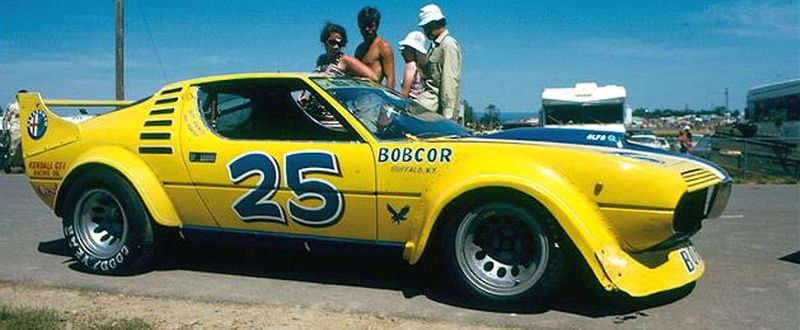
Enlisting the assistance of Alfa Romeo and the Autodelta team, including support from Carlo Chiti, and with the assistance of BOBCOR mechanic Oscar Feldman and Dennis Turpin (from Cosworth), the BOBCOR Montreal was put together in early 1973. Some initial disappointment with the car’s performance resulted in major modifications including the addition of the 3.3L full-race version of the Tipo 33 V8. It made its first racing appearance at the Watkins Glen Six Hour Race in 1973. Dropping out of the race after only two hours because of an oil seal failure, the car was next entered in a Trans Am race at Road America, where a gearbox issue resulted in retirement after only 10 laps. They sent the car back to Italy for further development, returning to the USA the following March. It was raced in Atlanta, but left the track and suffered damage to its fuel-injection system.
Alas, the car would qualify for many races, but was unable to finish because of numerous mechanical failures. Eventually, after retiring because of an expired motor at Watkins Glen, it was determined that the front-biased weight distribution and ongoing reliability problems would never allow the car to be truly competitive.
The original BOBCOR Racing Montreal went to Venezuela in 1978, but was returned to BOBCOR after a bad crash. The car was then sold and exported to El Salvador and repaired. Eventually, the car made its way back to the USA and was purchased by Jerry Galich, whose son Victor has painstakingly restored the car.
Two other Autodelta-tuned Montreals were also produced. The second car was completed late in 1972 and was briefly campaigned as a Group 4 Rally car in Europe in 1973. This car was later used by Alfa Romeo Germany in the DRM race series with some success, but was not used much after the 1975 season, as it was overshadowed by the much faster and well-supported Porsche RSRs. It is believed that this car no longer exists after being badly damaged in a crash. The third car is known as the Stradale, and was not used for racing.




